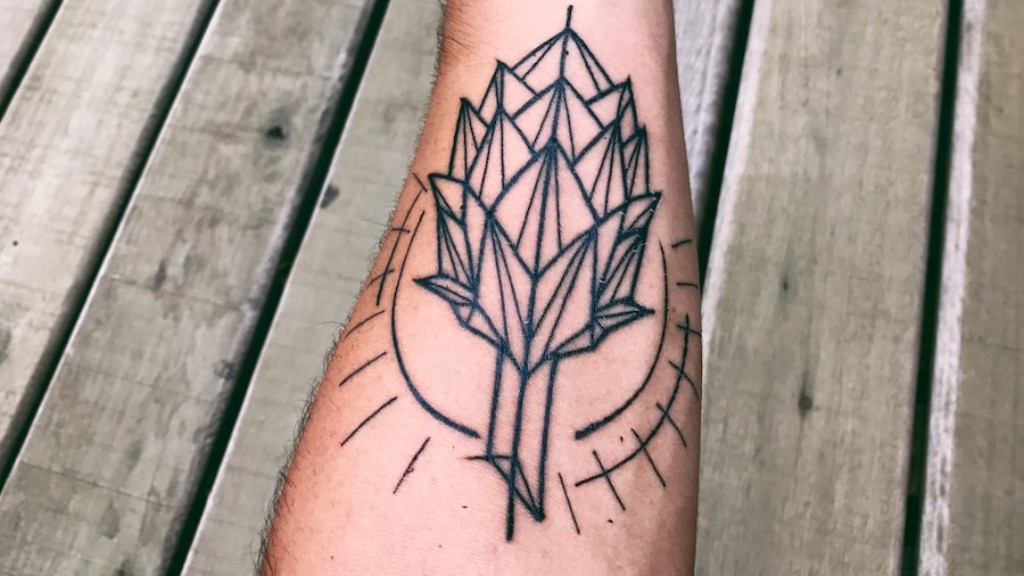When Can I Exercise After Getting a Tattoo?
So, you’ve just gotten a tattoo and you’re super excited to show it off to the world! But hold on, before you jump back into your regular exercise routine, it’s important to give your new ink some time to heal. While the temptation to hit the gym or go for a run might be strong, it’s crucial to understand the proper care and timing needed to ensure your tattoo heals beautifully. In this article, we’ll delve into the topic of when you can safely resume exercising after getting a tattoo.
Section 1: The Healing Process
Getting a tattoo is essentially inflicting controlled trauma on your skin. When the tattoo artist’s needle punctures your skin, it creates thousands of tiny wounds that need time to heal. Right after getting inked, your new tattoo will be covered with a protective bandage or plastic wrap to prevent bacteria from entering the open wounds. The healing process usually takes around 2-4 weeks, depending on various factors such as tattoo size, placement, and individual healing ability.
The First Few Days
During the first few days, your tattoo will be the most vulnerable to infection. It’s crucial to keep the area clean and follow the aftercare instructions given by your tattoo artist. This may include washing the tattoo gently with mild soap, applying a thin layer of ointment or moisturizer, and keeping it covered when necessary. Your tattoo will also be sensitive and might feel sore or itchy, which is completely normal.
Healing Stages
As the days go by, your tattoo will go through several stages of healing. The initial stage involves the formation of a scab or a dry layer of skin that helps protect the area underneath. It’s important to resist the urge to pick, scratch, or peel the scab, as this can result in scarring or color loss. Over time, the scab will naturally fall off, revealing the vibrant colors and intricate details of your tattoo. During this stage, keeping your tattoo hydrated with moisturizer is crucial to prevent excessive dryness or flaking.
The Final Outcome
After a few weeks, your tattoo should be fully healed, although it may continue to slightly improve in appearance over the next few months. The final outcome of your tattoo depends on various factors, including how well you take care of it during the healing process. By following the aftercare instructions, moisturizing regularly, and protecting it from excessive sunlight, you can ensure that your tattoo looks its best in the long run.
Section 2: When Can You Exercise?
Now that we’ve covered the basics of the healing process, let’s dive into the question that brought you here: when can you safely exercise after getting a tattoo? The general rule of thumb is to wait at least 48 hours before engaging in any rigorous physical activity. This gives your body enough time to start the healing process and reduce the risk of infection.
Listen to Your Body
It’s important to listen to your body and gauge how well your tattoo is healing before jumping back into your exercise routine. If your tattoo is still sensitive, red, or oozing any fluid, it’s best to give it more time to heal before resuming intense workouts. Engaging in strenuous activity too soon can cause excess sweating, friction, and irritation, which can negatively impact the healing process.
Consider Your Tattoo Placement
The location of your tattoo plays a significant role in determining when you can start exercising again. If your tattoo is on a body part that moves a lot during exercise, such as the back, arms, or legs, you may need to wait a little longer before engaging in activities that put strain on those areas. On the other hand, if your tattoo is in a less mobile area, such as the chest or abdomen, you might be able to resume light exercises sooner.
Start Slow and Gradually Increase Intensity
When you feel ready to get back into your fitness routine, it’s important to start slow and gradually increase the intensity of your workouts. This allows your body to adapt and prevents unnecessary stress on your healing tattoo. Begin with low-impact exercises like walking or gentle stretching, and gradually incorporate more intense workouts as your tattoo continues to heal.
Section 3: Additional Tips for Exercising with a New Tattoo
Now that you know when you can begin exercising after getting a tattoo, here are some additional tips to ensure a safe and successful workout:
Proper Attire
Wearing loose, breathable clothing that won’t rub against or irritate your tattoo is essential. Avoid tight workout gear that may cause friction or trap sweat against your newly tattooed skin.
Avoid Direct Sunlight
Exposing your healing tattoo to direct sunlight can cause fading and damage. If your workout involves outdoor activities, make sure to protect your tattoo by wearing sunscreen or covering it with clothing.
Stay Hydrated
Drinking plenty of water before, during, and after your workout helps keep your body hydrated and promotes overall skin health. Hydrated skin is less prone to dryness and itching, which can help your tattoo heal faster.
Be Mindful of Gyms and Pools
Gyms, saunas, and swimming pools can harbor bacteria and increase the risk of infection for your healing tattoo. If you’re planning to use these facilities, make sure to clean and dry your tattoo thoroughly afterwards and follow any additional aftercare instructions provided by your tattoo artist.
Section 4: Conclusion
In conclusion, exercising after getting a tattoo requires patience and consideration. While it can be tempting to jump right back into your fitness routine, it’s important to prioritize the healing process of your new ink. By giving your tattoo enough time to heal, listening to your body, and following the recommended aftercare, you can ensure that both your tattoo and your body stay in top shape. So, take it slow, be mindful, and soon enough, you’ll be back to breaking a sweat with your stunning new tattoo!



